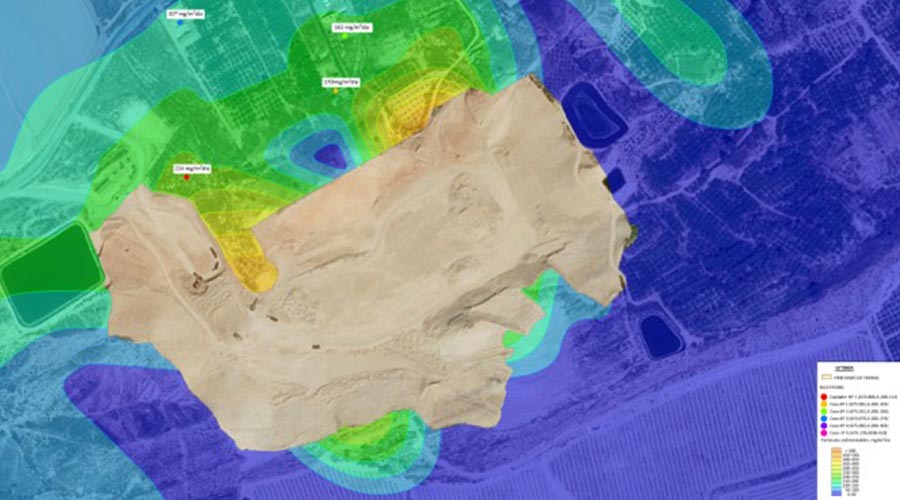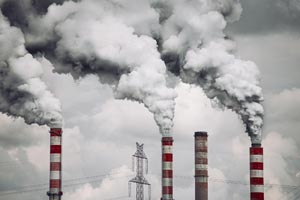What is
a pollutant dispersion study?
A pollutant dispersion study is a simulation based on mathematical models that allows estimating the environmental concentration of pollutants emitted by various sources (industrial plants, road traffic, accidental chemical releases) and the way they are dispersed in the atmosphere. They can also be used to predict future concentrations under specific circumstances.
Gas dispersion modelling predicts the movement of pollutant masses under different conditions, continuous discharge, steady state, no wind or a wide range of atmospheric conditions, and therefore allows estimating whether existing or planned industrial installations would comply with the legal requirements that apply to them. It is also a very useful tool in the design of strategies for the reduction of emissions of harmful pollutants and action plans for accidental chemical leaks.
Public administrations require this type of simulations for more and more facilities that generate atmospheric pollutants, both in their project phase and in operation, in order to evaluate their environmental viability and to grant activity permits.
On the other hand, the study of pollutant emissions provides the facilities that carry it out with valuable information on which to base strategic decisions regarding their activity.
The sectors that benefit from the possibilities offered by pollutant dispersion studies are, mainly:
- Chemical, pharmaceutical, paper, steel and cement industries.
- Consultancy firms (engineering, environmental).
- Energy sector (oil companies, power stations, thermal power stations, nuclear power stations, etc.).
- Public sector (state, regional, local administration).
- Universities and technology parks.
- R&D&I departments and companies.
AERMOD model
for pollutant dispersion studies


At Eurocontrol we use the AERMOD model to carry out atmospheric emission dispersion studies. Widely used, AERMOD is considered a state-of-the-art model recommended by the US EPA Guideline on Air Quality Models and is included in the so-called "second generation dispersion models" thanks to its advanced treatment of meteorology and the dispersion of pollutants in the atmosphere.
In particular, we use the environmental modeller for air quality analysis AERMOD View, which incorporates in a single interface the international reference models ISCST3, ISC-PRIME and AERMOD, and which uses three types of input data: topographic, meteorological and emission rates.
Our team of technicians, with extensive experience in the field of environmental monitoring, is at your disposal to provide you with the most rigorous information possible on the impact of your activity and to enable you to make the right decisions.
Discover our other
related services
Why choose Eurocontrol?

a team of experts at your disposal

Geographical coverage nationwide





